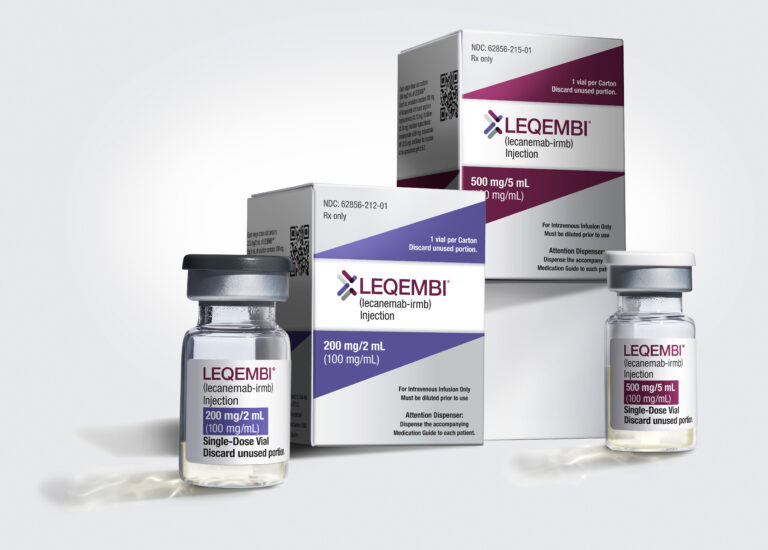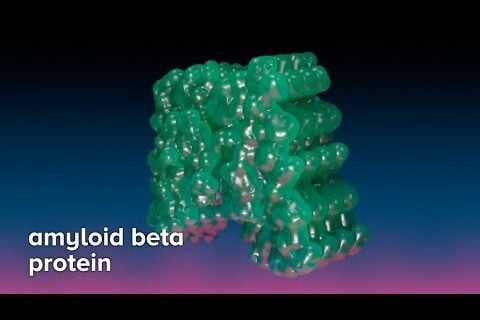Eli Lilly and Company (NYSE: LLY) has announced positive results of the TRAILBLAZER-ALZ 2 Phase 3 study showing that donanemab significantly slowed cognitive and functional decline in people with early symptomatic Alzheimer’s disease.
Donanemab met the primary endpoint of change from baseline until 18 months on the integrated Alzheimer’s Disease Rating Scale (iADRS). The primary endpoint of iADRS measures cognition and activities of daily living such as managing finances, driving, engaging in hobbies, and conversing about current events.
All secondary endpoints of cognitive and functional decline were also met and showed highly statistically significant clinical benefits with similar magnitude. Based on these results, Lilly will proceed with global regulatory submissions as quickly as possible and anticipates making a submission to the U.S. Food and Drug Administration (FDA) yet this quarter. Lilly will work with the FDA and other global regulators to achieve the fastest path to traditional approvals.
TRAILBLAZER-ALZ 2, a randomized, double-blind, placebo-controlled study, evaluated the safety and efficacy of donanemab, an investigational amyloid plaque targeting therapy. The study enrolled people with early symptomatic Alzheimer’s disease (AD), which includes mild cognitive impairment (MCI) and the mild dementia stage of disease, with the confirmed presence of AD neuropathology, and participants completed their course of treatment with donanemab once they reached a prespecified level of amyloid plaque clearance.
Participants in TRAILBLAZER-ALZ 2 were stratified by their level of the brain protein tau, a predictive biomarker for Alzheimer’s disease progression. The primary analysis population (n=1182) for which the study was powered was comprised of people with an intermediate level of tau and clinical symptoms of Alzheimer’s disease. In this population, the primary endpoint (iADRS) showed 35% slowing of decline (p<0.0001), and an important key secondary endpoint (Clinical Dementia Rating-Sum of Boxes, or CDR-SB) showed 36% slowing of decline (p<0.0001) over 18 months. Additional prespecified secondary analyses showed:
- 47% of participants on donanemab showed no decline on CDR-SB, a key measure of disease severity at 1 year (compared to 29% of participants on placebo, p<0.001).
- 52% of participants completed their course of treatment by 1 year and 72% completed by 18 months as a result of achieving plaque clearance.
- Participants on donanemab had 40% less decline in ability to perform activities of daily living at 18 months [as measured by Alzheimer’s Disease Cooperative Study – instrumental Activities of Daily Living Inventory (ADCS-iADL), p<0.0001].
- Participants on donanemab experienced a 39% lower risk of progressing to the next stage of disease compared to placebo (CDR-Global Score, HR=0.61; p<0.001).
“Over the last 20 years, Lilly scientists have blazed new trails in the fight against Alzheimer’s disease by elucidating basic mechanisms of AD pathology and discovering imaging and blood biomarker tools to track the pathology,” said Daniel Skovronsky, M.D., Ph.D., Lilly’s chief scientific and medical officer, and president of Lilly Research Laboratories.
“We are extremely pleased that donanemab yielded positive clinical results with compelling statistical significance for people with Alzheimer’s disease in this trial. This is the first Phase 3 trial of any investigational medicine for Alzheimer’s disease to deliver 35% slowing of clinical and functional decline.”
The study also enrolled a smaller number of people with high levels of tau at baseline (n=552), representing a later stage of disease progression. Because these participants were predicted to progress more quickly and be less responsive to therapy, the target population for the study was the intermediate tau population.
The high tau participants were combined with the intermediate tau population in an additional primary analysis of all participants enrolled (n=1736). In this combined population, donanemab also demonstrated meaningful positive results across all clinical endpoints (p<0.001), with CDR-SB and iADRS showing 29% and 22% slowing of decline, respectively.
The incidence of amyloid-related imaging abnormalities (ARIA) was consistent with the TRAILBLAZER-ALZ Phase 2 study. ARIA is observed with the amyloid plaque clearing antibody class of therapies and is most commonly observed as temporary swelling in an area or areas of the brain (ARIA-E) or as microhemorrhages or superficial siderosis (ARIA-H), in either case detected by MRI.
In the overall donanemab treatment group, ARIA-E occurred in 24.0% of treated participants, with 6.1% experiencing symptomatic ARIA-E. ARIA-H occurred in 31.4% in the donanemab group and 13.6% in the placebo group.
The majority of ARIA cases were mild to moderate and resolved or stabilized with appropriate management. ARIA is usually asymptomatic, although serious and life-threatening events can occur. In this study, the incidence of serious ARIA was 1.6%, including two participants whose death was attributed to ARIA and a third participant who died after an incident of serious ARIA. Infusion-related reactions occurred in 8.7% of participants with most cases mild to moderate in severity.
“We are encouraged by the potential clinical benefits that donanemab may provide, although like many effective treatments for debilitating and fatal diseases, there are associated risks that may be serious and life-threatening,” said Mark Mintun, M.D., group vice president Neuroscience Research & Development at Lilly, and president of Avid Radiopharmaceuticals.
“We note that these results suggest that people in the early pathological stage of disease could be the most responsive to therapeutics targeting amyloid. We thank the participants in the clinical trial and their loved ones for their time and commitment to finding solutions for this disease.”
In addition to slowing cognitive and functional decline in TRAILBLAZER-ALZ 2, donanemab produced significant reductions in brain amyloid plaque levels as early as 6 months after initiating treatment, as observed using amyloid positron emission tomography (PET) brain scan, with many patients reaching amyloid levels considered negative for pathology1 (34% of participants in the intermediate tau population achieved amyloid clearance at 6 months and 71% achieved clearance at 12 months).
“Amyloid plaque is a defining pathophysiological feature of Alzheimer’s disease,” said Dr. Eric Reiman, CEO of Banner Research, one of the research sites for the TRAILBLAZER-ALZ 2 trial. “This study’s topline results provide compelling support for the relationship between amyloid plaque removal and a clinical benefit in people with this disease.”
“These Phase 3 data confirm the benefit observed in our TRAILBLAZER-ALZ study and show that donanemab, if approved, may represent a significant step forward for people with early symptomatic Alzheimer’s disease, and allow them to continue to participate in activities that are meaningful to them,” said Anne White, executive vice president of Eli Lilly and Company and president of Lilly Neuroscience.
“We believe our data meets the ‘high level of evidence’ the Centers for Medicare & Medicaid Services (CMS) has described as the trigger for reconsideration of its National Coverage Determination. People with early Alzheimer’s disease need and deserve full coverage and access for approved therapies.”
Topline study results:
In the intermediate tau population, the baseline characteristics were similar to other contemporary early symptomatic AD studies (e.g., MMSE score was 22.9). Accordingly, the placebo arm progressed as expected (decline on iADRS and CDR-SB of 9.3 and 1.9 points respectively over 18 months). Prespecified analyses used standard statistical methods including the mixed model for repeated measures (MMRM) and natural cubic spline (NCS) analyses, with similar results across both methods. The following efficacy measures were obtained at 18 months comparing decline in donanemab to placebo treated participants:
| Intermediate tau population | MMRM statistical analysis | NCS statistical analysis | ||
| Relative % slowing | p-value | Relative % slowing | p-value | |
| iADRS | 40 % | p<0.0000004 | 35 % | p<0.000004* |
| CDR-SB | 36 % | p<0.000002* | 37 % | p<0.0000005 |
| ADCS-iADL | 43 % | p<0.00005 | 40 % | p<0.0001* |
| ADAS-Cog13 | 35 % | p<0.00003 | 32 % | p<0.00005* |
| *indicates alpha-controlled analyses; iADRS= Alzheimer’s Disease Rating Scale; CDR-SB= Clinical Dementia Rating-Sum of Boxes; ADCS-iADL = Alzheimer’s Disease Cooperative Study – instrumental Activities of Daily Living Inventory (iADL); ADAS-Cog13 = the 13-item Alzheimer’s Disease Assessment Scale – Cognitive |
In the combined intermediate and high tau population the baseline MMSE score was 22.3 and the placebo arm showed a greater decline compared to the intermediate tau population (worsening on iADRS and CDR-SB of 13.1 and 2.4 points respectively over 18 months). Study results at 18 months showed:
| Combined intermediate and high tau population | MMRM statistical analysis | NCS statistical analysis | ||
| Relative % slowing | p-value | Relative % slowing | p-value | |
| iADRS | 23 % | p<0.00004 | 22 % | p<0.00006* |
| CDR-SB | 29 % | p<0.00000005* | 29 % | p<0.00000007 |
| ADCS-iADL | 28 % | p<0.0002 | 28 % | p<0.0002* |
| ADAS-Cog13 | 19 % | p<0.0008 | 20 % | p<0.0007* |
| *indicates alpha-controlled analyses |
Full results of the TRAILBLAZER-ALZ 2 study will be presented at the Alzheimer’s Association International Conference in July and submitted for publication in a peer-reviewed clinical journal.
About TRAILBLAZER-ALZ 2 Study and the TRAILBLAZER-ALZ program
TRAILBLAZER-ALZ 2 (NCT04437511) is a Phase 3, double-blind, placebo-controlled study to evaluate the safety and efficacy of donanemab in participants ages 60-85 years with early symptomatic Alzheimer’s disease (MCI or mild dementia due to Alzheimer’s disease) with the presence of confirmed Alzheimer’s disease neuropathology. The trial enrolled 1736 participants selected based on cognitive assessments in conjunction with amyloid plaque imaging and tau staging by PET imaging.
Lilly previously announced and published in the New England Journal of Medicine (NEJM) results from the Phase 2 TRAILBLAZER-ALZ study in 2021. In addition, Lilly shared data from TRAILBLAZER-ALZ 4, the first active comparator study in early symptomatic Alzheimer’s disease, at the 15th Clinical Trials on Alzheimer’s Disease (CTAD) conference in 2022.
Lilly continues to study donanemab in multiple clinical trials, including TRAILBLAZER-ALZ 3, which is focused on preventing symptomatic Alzheimer’s disease in participants with preclinical AD; TRAILBLAZER-ALZ 5, a registration trial for early symptomatic Alzheimer’s disease currently enrolling in China; and TRAILBLAZER-ALZ 6, which is focused on expanding our understanding of ARIA through novel MRI sequences, blood-based biomarkers and different dosing regimens of donanemab.
SOURCE:











